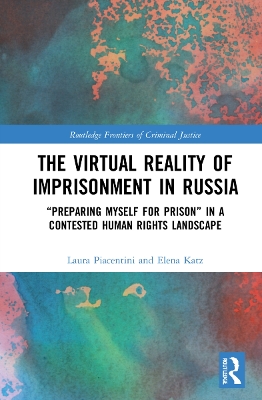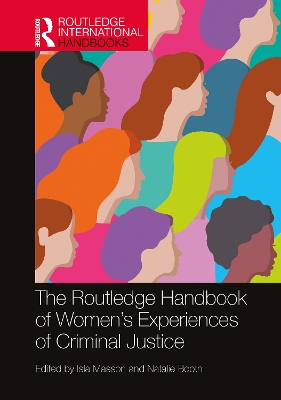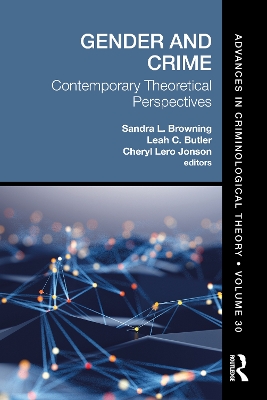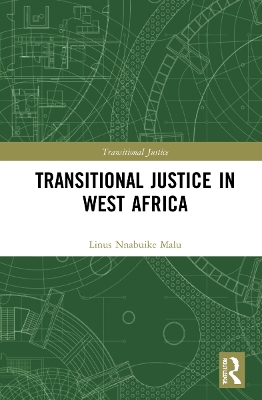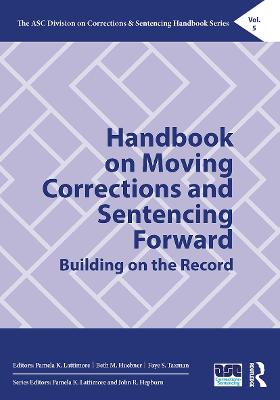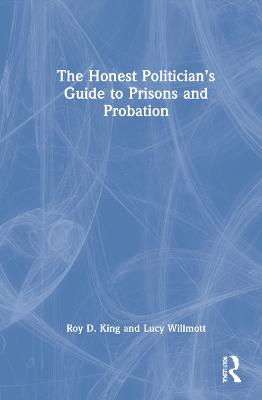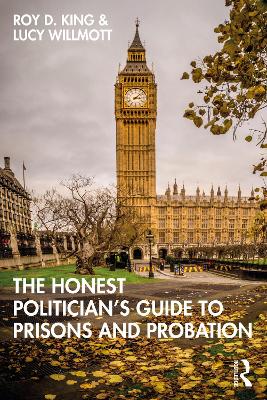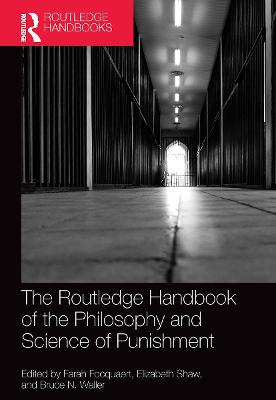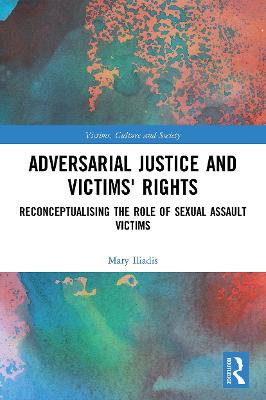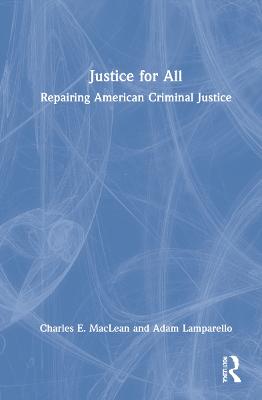Role of the Media in Criminal Justice Policy
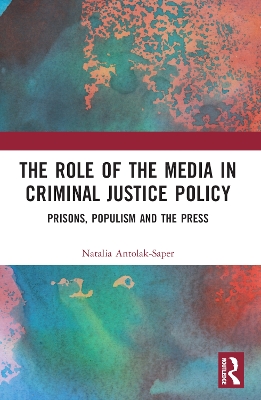 portes grátis
portes grátis
Role of the Media in Criminal Justice Policy
Prisons, Populism and the Press
Antolak-Saper, Natalia
Taylor & Francis Ltd
05/2024
254
Mole
9781032115276
Pré-lançamento - envio 15 a 20 dias após a sua edição
Acknowledgements
1 Introduction
I Introduction
II The Approach Adopted
A Theoretical Framework
B Case Study
1 Data Collection for the Case Study
2 Method of Analysis
C Interviews
III Terminology
IV The Structure of the Book
2 Penal Populism
I Introduction
II What Is Penal Populism?
III Conditions Contributing to the Rise of Penal Populism
A Public Opinion
B Media
C Emotion
IV The Effect of Penal Populism on Sentencing Laws and Practice
V Conclusion
3 Media as Agenda Setter
I Introduction
II The Role of the Media in Policy
III Media as Agenda Setter
A Campaigning
1 Media as Advocate
2 Media and Stakeholders
B Framing
1 Faulty System
2 Social Breakdown
3 Blocked Opportunities
4 Media Violence and Racist System
C Fear of Crime and Moral Panics
1 Concern
2 Hostility
3 Consensus
4 Disproportion
5 Volatility
IV Conclusion
4 Media as a Reflection of Public Opinion
I Introduction
II Crime as News Content
III 'News Values'
A Immediacy
B Dramatisation
C Personalisation
D Simplification
E Titillation
F Conventionalism
G Structured Access
H Novelty
I Risk
J Sex
K Proximity
L Violence
M Spectacle and Graphic Imagery
N Children
IV Conclusion
5 Parole
I Introduction
II Parole and Sentencing in Victoria
A Truth in Sentencing
III The History of Parole Reforms
A Parole in Victoria: 1901-2011
B Historical Media Interest in Parole
C Parole Reforms: Balancing Prisoner Interests with Safety to the Community
IV Changes to Parole From 2011 to 2013
A R v Bayley
V Parole: 2013 to Current Day
VI Conclusion
6 Case Study: Adrian Bayley, the Media and the Reform of Parole Law and Practice
I Introduction
II Media as Agenda Setter
A Campaigns and the Media as Advocate
(a) Media as Advocate
(b) Media and Stakeholders
B Framing
C Fear of Crime and Moral Panics
(a) Concern
(b) Hostility and Consensus
(c) Disproportion
(d) Volatility
(e) Conclusion
III Media as a Source of Information
A 'News Values'
(a) Immediacy
(b) Dramatisation
(c) Personalisation
(d) Simplification
(e) Structured Access
(f) Proximity
(g) Violence, Spectacle and Graphic Imagery
(h) Conclusion
IV Conclusion
7 Conclusion
I Introduction
II The Media's Influence on Sentencing and Parole Policies
III Parole Reforms Post-Adrian Bayley in Practice
IV Moderating the Media's Influence on Sentencing and Parole Policies
A Addressing Misinformation
(a) Informed Public Opinion
B Institutionalising Public Opinion
(a) Introduction
(b) Public Opinion and Sentencing Reform
V Where to from Here? Areas for Further Research
VI Conclusion
Appendix 1: Newspaper Coding Sheet
Appendix 2: Parliamentary Debates Coding Sheet
Appendix 3: Interview Questions
I Senior Politicians
For those not directly involved in the Adrian Bayley Case
For those directly involved in the Adrian Bayley Case
II Senior Policymakers
For those not directly involved in the Adrian Bayley Case
For those directly involved in the Adrian Bayley Case
III Journalists
For Herald Sun journalists specifically
For The Age journalists specifically
Appendix 4: Human Ethics Certificate of Approval
Human Ethics Certificate of Approval
Bibliography
Index
Acknowledgements
1 Introduction
I Introduction
II The Approach Adopted
A Theoretical Framework
B Case Study
1 Data Collection for the Case Study
2 Method of Analysis
C Interviews
III Terminology
IV The Structure of the Book
2 Penal Populism
I Introduction
II What Is Penal Populism?
III Conditions Contributing to the Rise of Penal Populism
A Public Opinion
B Media
C Emotion
IV The Effect of Penal Populism on Sentencing Laws and Practice
V Conclusion
3 Media as Agenda Setter
I Introduction
II The Role of the Media in Policy
III Media as Agenda Setter
A Campaigning
1 Media as Advocate
2 Media and Stakeholders
B Framing
1 Faulty System
2 Social Breakdown
3 Blocked Opportunities
4 Media Violence and Racist System
C Fear of Crime and Moral Panics
1 Concern
2 Hostility
3 Consensus
4 Disproportion
5 Volatility
IV Conclusion
4 Media as a Reflection of Public Opinion
I Introduction
II Crime as News Content
III 'News Values'
A Immediacy
B Dramatisation
C Personalisation
D Simplification
E Titillation
F Conventionalism
G Structured Access
H Novelty
I Risk
J Sex
K Proximity
L Violence
M Spectacle and Graphic Imagery
N Children
IV Conclusion
5 Parole
I Introduction
II Parole and Sentencing in Victoria
A Truth in Sentencing
III The History of Parole Reforms
A Parole in Victoria: 1901-2011
B Historical Media Interest in Parole
C Parole Reforms: Balancing Prisoner Interests with Safety to the Community
IV Changes to Parole From 2011 to 2013
A R v Bayley
V Parole: 2013 to Current Day
VI Conclusion
6 Case Study: Adrian Bayley, the Media and the Reform of Parole Law and Practice
I Introduction
II Media as Agenda Setter
A Campaigns and the Media as Advocate
(a) Media as Advocate
(b) Media and Stakeholders
B Framing
C Fear of Crime and Moral Panics
(a) Concern
(b) Hostility and Consensus
(c) Disproportion
(d) Volatility
(e) Conclusion
III Media as a Source of Information
A 'News Values'
(a) Immediacy
(b) Dramatisation
(c) Personalisation
(d) Simplification
(e) Structured Access
(f) Proximity
(g) Violence, Spectacle and Graphic Imagery
(h) Conclusion
IV Conclusion
7 Conclusion
I Introduction
II The Media's Influence on Sentencing and Parole Policies
III Parole Reforms Post-Adrian Bayley in Practice
IV Moderating the Media's Influence on Sentencing and Parole Policies
A Addressing Misinformation
(a) Informed Public Opinion
B Institutionalising Public Opinion
(a) Introduction
(b) Public Opinion and Sentencing Reform
V Where to from Here? Areas for Further Research
VI Conclusion
Appendix 1: Newspaper Coding Sheet
Appendix 2: Parliamentary Debates Coding Sheet
Appendix 3: Interview Questions
I Senior Politicians
For those not directly involved in the Adrian Bayley Case
For those directly involved in the Adrian Bayley Case
II Senior Policymakers
For those not directly involved in the Adrian Bayley Case
For those directly involved in the Adrian Bayley Case
III Journalists
For Herald Sun journalists specifically
For The Age journalists specifically
Appendix 4: Human Ethics Certificate of Approval
Human Ethics Certificate of Approval
Bibliography
Index

